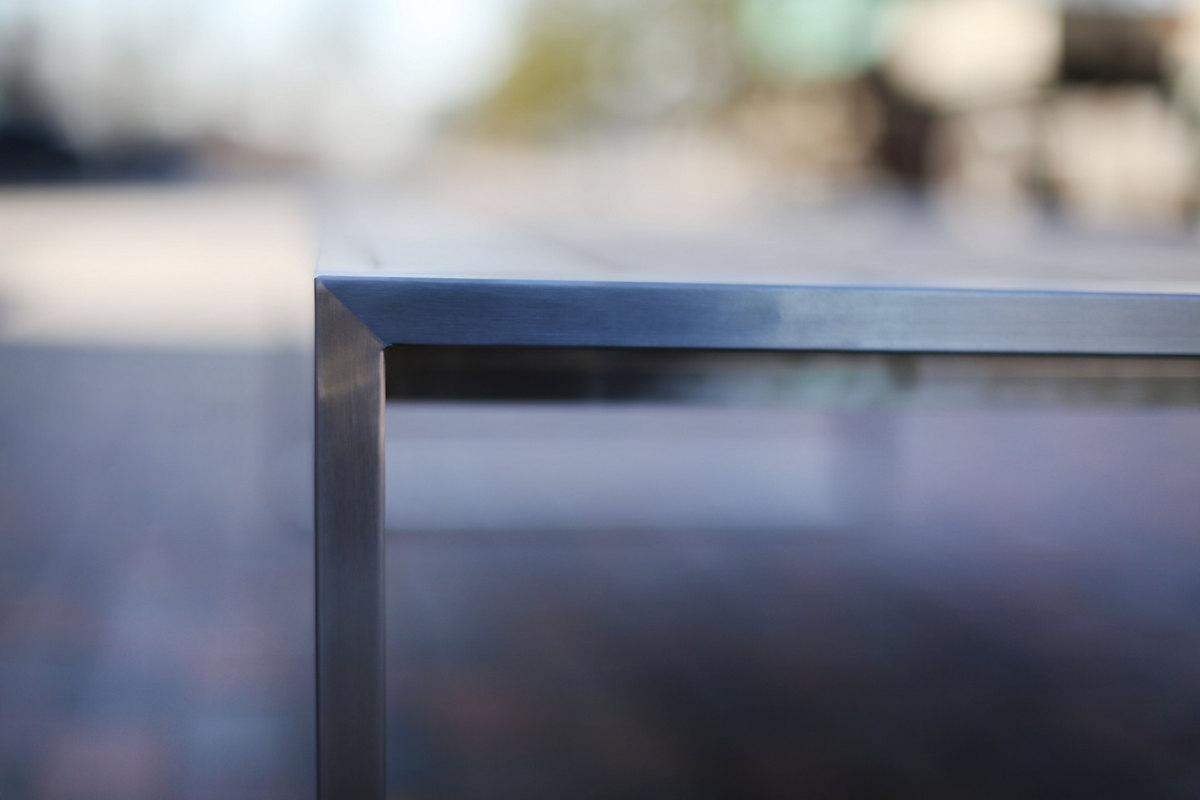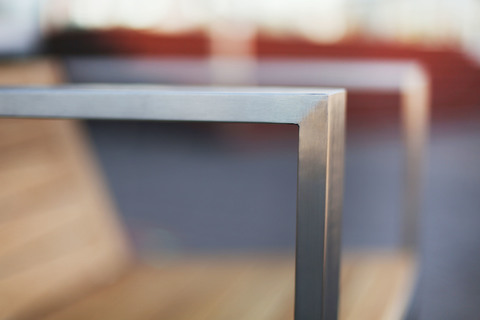Properties of materials used to manufacture the TRIF furniture
Our company uses only high-quality materials that impart the final product with excellent durability and wear resistance. In the manufacture of our furniture, we use stainless steel of the following grades:
- AISI 304 (Grade 08X12Н10 by the GOST standard of the Russian Federation). Chromium content is 12%, nickel content is 10%.
- AISI 316 (Grade 08X17H13M2 by the RF GOST). Chromium content is 18%, nickel content is 14%.
These high-strength grades are widely used in the food and chemical industries. However, like all stainless steel, they remain ductile, which increases the likelihood of adhesion of pure metals when they come in contact with the product's surface. The material remains positively charged, which makes it more likely to attract fine metal particles from the atmosphere.
Stainless steel is an alloy of several chemical elements:
- Fe (iron);
- Cr (chromium);
- alloying agents.
This ensures high resistance to moisture and the resulting corrosion but makes the material soft and electrolytically active. In terms of rigidity, stainless steel is inferior to decorative chrome and nickel plating. It creates electrolyte pairs with ferrous metals. These properties give rise to the need for regular maintenance of stainless steel products.
How to preserve the presentable appearance of stainless steel products?
Adhering to several simple rules, you can maintain the presentable appearance of the TRIF furniture for many years.
Stainless steel care:
- Perform surface cleaning at least once every 6 months.
- Use a warm soapy solution and a soft washcloth to remove stains.
- Use household polishing pastes to remove rust stains.
- Do not utilize cleaning products that contain ammonia and chlorides.
- Use a hard sponge to remove spots and pits.
If the stainless steel furniture products are used in coastal areas or areas with harsh climate and cold weather, surface cleaning should be performed more often than once every six months. Other negative factors are the proximity of metal plants that emit acid compounds into the atmosphere.



